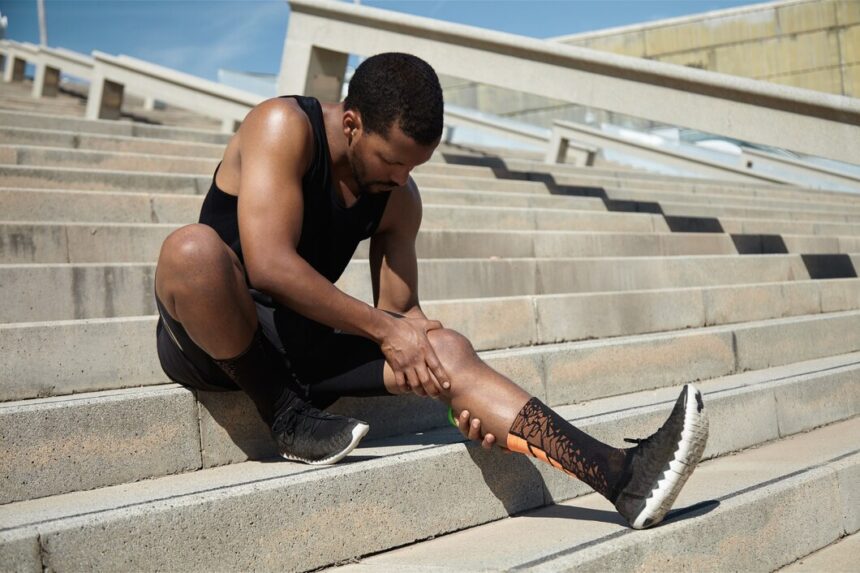Achilles tendinitis is a common condition that affects the Achilles tendon, the large tendon that connects the calf muscles to the heel bone. It is often seen in athletes and active individuals, but it can also impact anyone who engages in repetitive activities that stress the tendon. Here’s a comprehensive look at the symptoms, causes, and treatments for Achilles tendinitis.
Symptoms of Achilles Tendinitis
Achilles tendinitis is characterized by several distinct symptoms, including:
- Pain: The most common symptom is pain along the back of the leg, near the heel. This pain often starts as mild discomfort and can progress to a more severe, persistent ache.
- Swelling: The affected area may become swollen and tender. Swelling can be localized around the tendon or more generalized in the surrounding area.
- Stiffness: The Achilles tendon might feel stiff, particularly in the morning or after periods of inactivity.
- Warmth and Redness: In some cases, the area around the tendon can become warm to the touch and reddened.
- Reduced Range of Motion: The pain and stiffness can limit the ability to flex the foot upward or perform other movements involving the calf and ankle.
Causes of Achilles Tendinitis
Achilles tendinitis is often the result of overuse or repetitive stress on the tendon. Common causes include:
- Excessive Physical Activity: Activities that involve running, jumping, or sudden changes in direction can place excessive stress on the Achilles tendon.
- Inadequate Footwear: Wearing shoes that do not provide proper support or cushioning can contribute to the development of tendinitis.
- Sudden Increase in Activity: A sudden increase in the intensity or duration of physical activity can strain the tendon, leading to inflammation.
- Biomechanical Issues: Structural abnormalities in the feet or legs, such as flat feet or high arches, can place additional stress on the Achilles tendon.
- Age: Tendinitis is more common in middle-aged individuals as the tendon becomes less flexible and more prone to injury over time.
Treatment for Achilles Tendinitis
Treatment for Achilles tendinitis typically focuses on reducing inflammation, relieving pain, and promoting healing. Common approaches include:
- Rest: Reducing or stopping activities that cause pain can help the tendon recover. Resting the affected leg is crucial for healing.
- Ice Therapy: Applying ice to the affected area can reduce swelling and numb the pain. It’s usually recommended to apply ice for 15-20 minutes several times a day.
- Compression and Elevation: Using an elastic bandage to compress the area and keeping the leg elevated can help manage swelling.
- Medications: Nonsteroidal anti-inflammatory drugs (NSAIDs), such as ibuprofen, can provide pain relief and reduce inflammation.
- Physical Therapy: A physical therapist can develop a rehabilitation program that includes stretching and strengthening exercises to improve flexibility and strength in the tendon.
- Footwear and Orthotics: Wearing supportive shoes and using orthotic inserts can help alleviate stress on the Achilles tendon.
- Gradual Return to Activity: Once pain subsides, gradually reintroducing activity helps prevent re-injury. It’s important to follow a structured return-to-activity plan.
In severe cases where conservative treatments are not effective, medical intervention may be required. This can include corticosteroid injections or, in rare instances, surgical procedures to repair or release the affected tendon.
Preventing Achilles Tendinitis
Preventive measures can help reduce the risk of developing Achilles tendinitis:
- Warm-Up and Stretch: Properly warming up before exercise and incorporating stretching into your routine can prepare the tendon for activity.
- Strengthening Exercises: Strengthening the calf muscles and improving overall leg strength can support the Achilles tendon and reduce the risk of injury.
- Choose Proper Footwear: Investing in well-fitted shoes with adequate cushioning and support can help prevent excessive stress on the tendon.
- Increase Activity Gradually: Gradually increasing the intensity and duration of physical activity can help prevent overuse injuries.
Achilles tendinitis can be a painful and limiting condition, but with appropriate treatment and preventive measures, most individuals can recover fully and return to their normal activities. If you suspect you have Achilles tendinitis, consulting a healthcare professional can provide a tailored treatment plan and help you manage the condition effectively.










